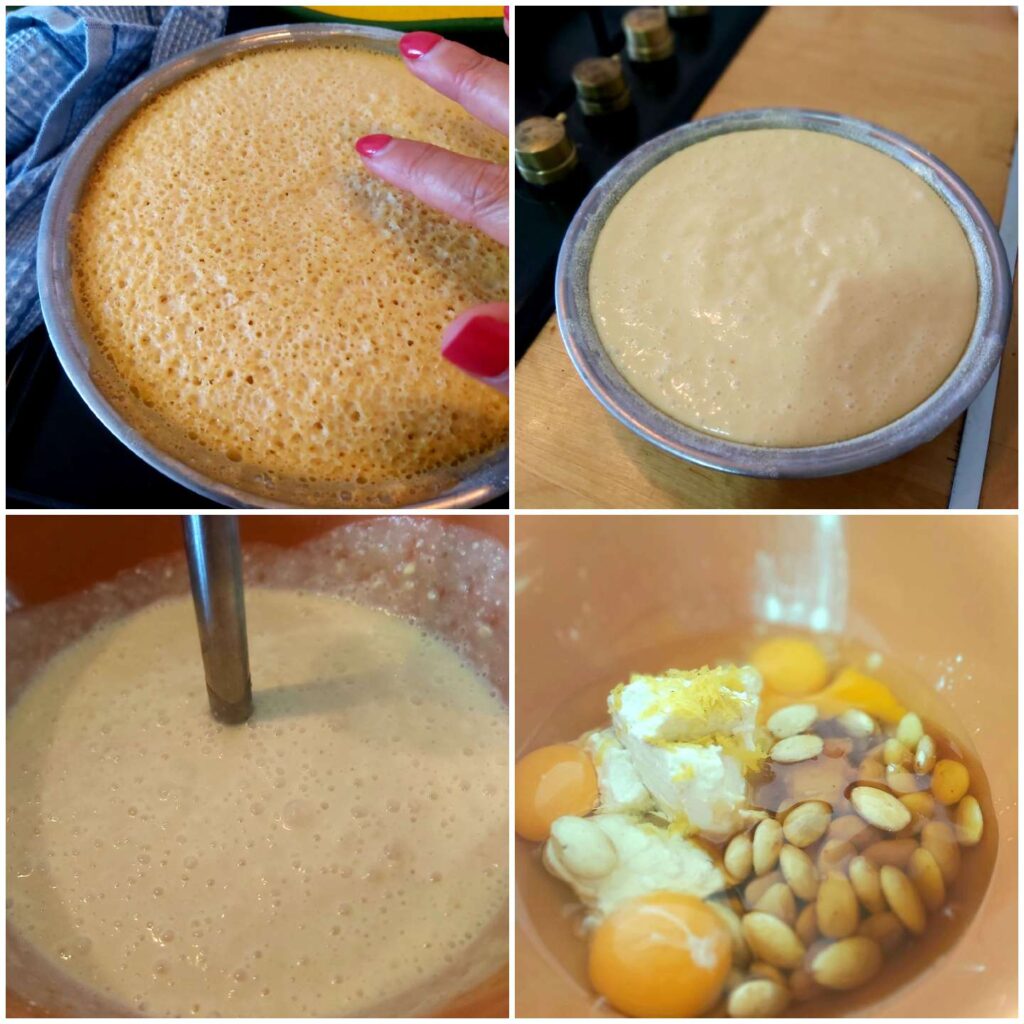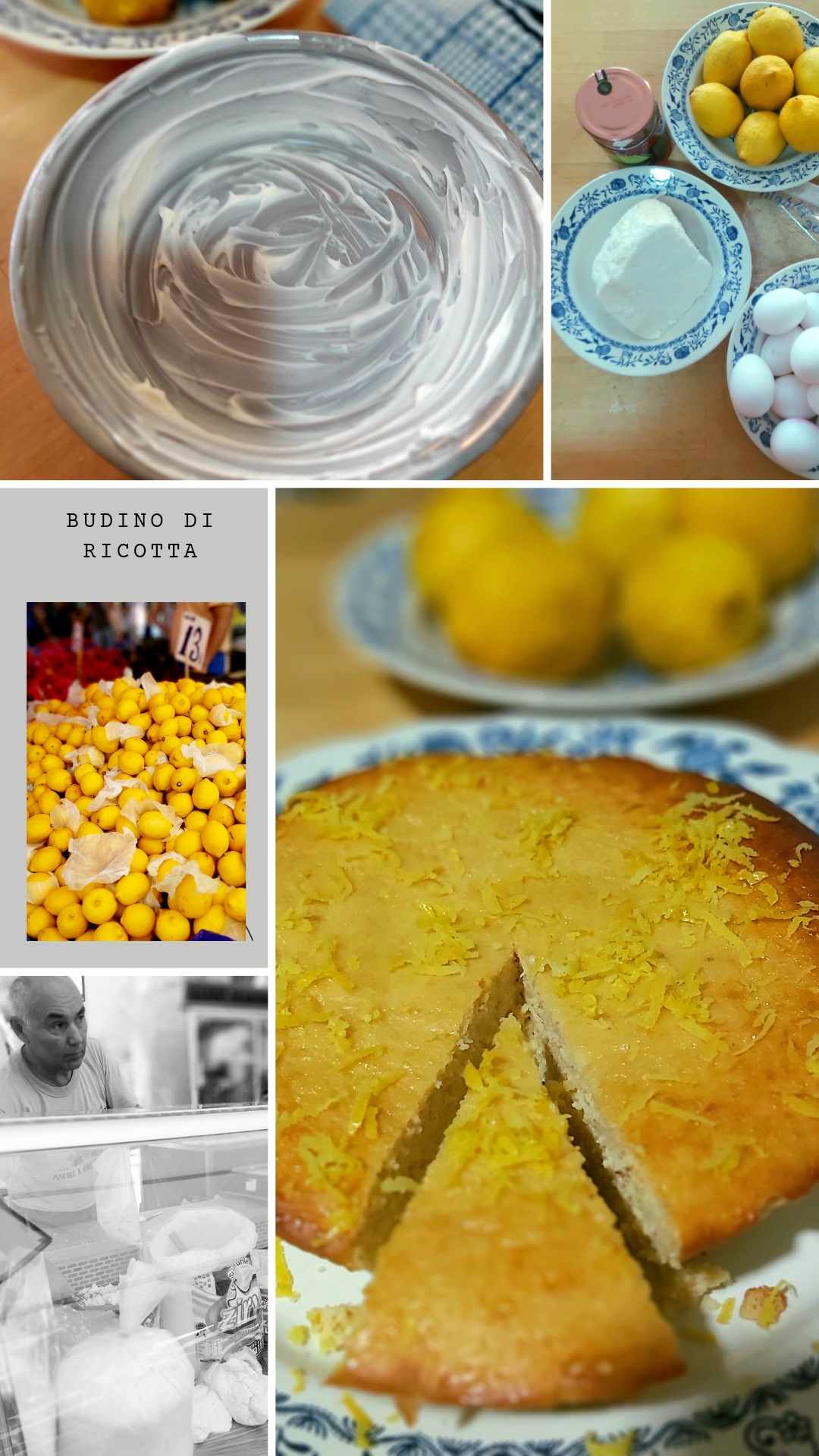Turkish ricotta or “Lor” is sold in big, generous sacks – all the better to make big, generous “börek” fillings with. I did recieve a raised eyebrow when asking for a paltry 300g in the market and I think a sympathy smile for being a hapless “yabanci” (foreigner). But I had my prized unsalted, pristine ricotta and I was happy.
As in Italy lor comes in salted and unsalted versions. Salted lor is used in “börek” while the unsalted version is often served for breakfast with honey or fruit (particularly good with strawberries) or in a salad with fresh herbs and walnut. Here I use the unsalted (“tuzsuz”) version.
I followed a “Budino di ricotta” recipe of Artusi Pellegrino, the so called grandfather of Italian cuisine, merely decreasing the sugar by 25g, adding a smidge of cornflour plus “mahlep powder” as he suggests the addition of a few ground apricot kernels (the crushed stones of a wild cherry, a member of the rose family and much used in SE Turkey as a baking flavouring). One can only hope he does not turn in his grave at my speedy “all in one” method!
This is unfettered cooking but plain it is not and versatile it is. It is somewhere between a cheesecake and a batter pudding such as clafoutis. A small slice with a cup of tea is perfect in the afternoon, with a fruit couli poured over it becomes an elegant dessert and with an expresso in the morning it is a convenient breakfast bite.
Ingredients (“Malzemeler”)
- 300g Unsalted ricotta (“Tuzsuz lor”)
- 5 eggs ( “5 yumurta”)
- 75g of sugar or honey or agave syrup (” toz şeker ile bal ile agave pekmez”)
- 100g ground almonds or if unavailable whole almonds which will give a more crunchy texture (” 100 gr badem tozu veya bütün çiğ badem”)
- Zest of 2 lemons (“2 limon kabuğu rendesi”)
- 0.5 tsp mahlep powder (“yarım çay kaşığı mahlep tozu”) or substitute 1 tsp vanilla essence
- 1tsp cornflour (“bir çay kaşığı misir nisastasi”) or protein powder of your choice
- For preparing the baking tin: 1 large knob of butter and 1tbsp cornmeal (“20g tereyağı ve 1 yemek kaşığı mısır unu”)
Equipment
An 18cm or 20cm baking tin or ceramic dish.
Deep baking tray in the oven to be half filled with water
A stick blender or food processor
How To

The key to this dish is to be gentle! It is almost poached not baked. Ricotta is a delicate protein and coagulates at higher temperatures creating a grainy texture in the cake so be cautious! If in doubt about the ferocity of your oven err on the side of caution; lower the temperature and bake a little longer.
Pour water into the baking tray inside the oven before switching the oven on!
Set the temperature to 140C fan oven and 160C regular oven
Smear the soft butter all around the baking tin with your finger tips. (I generally then give myself an impromptu hand butter massage!) Then dust with the corn meal and shake out the excess. In the summer I the place the tin in the freezer to stop the butter/cornmeal melting into a puddle and not doing its non-stick job!
Most of the effort for this recipe is in the preparation… all that remains now is to:
– zest the lemons and put the zest of one lemon in the mixing bowl/food processor
– place the ingredients all together in one bowl/in the food processor and blend until the almonds are no longer visible as pieces
Pour the batter into the prepared pan and place carefully in the hot water in the tray in the oven (if you wear glasses remove them before this step!)
Bake for 35-45 minutes until the cake is done but still wobbles a little in the middle.
Take out of the oven, sprinkle the remaining lemon zest over the top and allow to cool before eating. As it is a moist cake it keeps well in the fridge for 3-4 days and it also can be frozen.
Nutrition
Macronutrients: This is high in protein because of the ricotta , the eggs and the almonds. It averages 11-14g of protein per slice, which contains approximately 200kcals.
It is lower carb (low carb if you use a low glycemic index sweetener) and low fat.
Micronutrients: High in calcium, Vit E, phosphorous and Magnesium
Allergies: Gluten-free
Türkçe
Pişirme ekipmanları
18 cm veya 20 cm’lik bir fırın tepsisi veya seramik tabak.
Derin fırın tepsisini yarısına kadar su dolduracak şekilde fırına verin.
Bir çubuk blender veya mutfak robotu
Nasıl yapılır
Bu yemeğin anahtarı nazik olmaktır! Fırında değil neredeyse haşlanmış. Ricotta hassas bir proteindir ve yüksek sıcaklıklarda pıhtılaşarak kekte grenli bir doku oluşturur, bu yüzden dikkatli olun! Fırınınızın vahşiliğinden şüphe duyuyorsanız dikkatli olun; sıcaklığı düşürün ve biraz daha pişirin.
Fırını açmadan önce fırının içindeki fırın tepsisine su dökün!
Sıcaklığı 140C fanlı fırına ve 160C normal fırına ayarlayın.
Yumuşamış tereyağını parmak uçlarınızla fırın kabının her yerine yayın. (Daha sonra genellikle kendime doğaçlama bir el yağı masajı yaparım!) Ardından mısır ununu serpin ve fazlalığı silkeleyin. Yaz aylarında, tereyağının/mısır ununun bir su birikintisine dönüşmesini ve yapışmaz işini yapmamasını önlemek için tenekeyi dondurucuya yerleştirdim!
Bu tarif için harcanan çabanın çoğu hazırlık aşamasındadır… Şimdi geriye kalan tek şey:
– limonun kabuğunu rendeleyin ve bir limonun kabuğunu karıştırma kabına/mutfak robotuna koyun
– tüm malzemeleri tek bir kaseye/mutfak robotuna koyun ve bademler artık parça olarak görünmeyene kadar karıştırın
Hamuru hazırlanan kalıba dökün ve fırındaki tepsideki sıcak suya dikkatlice yerleştirin (gözlük takıyorsanız bu adımdan önce gözlüklerinizi çıkarın!)
Kek bitene kadar 35-45 dakika pişirin ama yine de ortasında biraz sallanıyor.
Fırından çıkarın, kalan limon kabuğu rendesini üzerine serpin ve yemeden önce soğumaya bırakın. Yaş pasta olduğu için buzdolabında 3-4 gün iyi duruyor ve dondurulabiliyor.
Beslenme gerçekleri
Makrobesinler: Bu, lor, yumurta ve badem nedeniyle protein açısından yüksektir. Yaklaşık 200 kcal içeren dilim başına ortalama 11-14 g protein içerir.
Düşük karbonhidrat (düşük glisemik indeksli bir tatlandırıcı kullanıyorsanız düşük karbonhidrat) ve düşük yağdır.
Mikro besinler: Yüksek kalsiyum, E vitamini, fosfor ve Magnezyum
Alerjiler: Glutensiz


